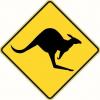Hello and thanks for any input.
I bought a 3 jaw bit brace last year from Lee Valley https://www.leevalley.com/en-ca/shop...w-chuck-braces
and had a few questions.
Is there a size limit to how bit of an auger bit you can use with a brace? If so, how large would it be?
Last year I was making a low Roman workbench and bought my brace and a 1 1/2" wood owl bit https://www.leevalley.com/en-ca/shop...s?item=60J0124 to create the holes for the workbenches legs.
About half way through the first hole my bit started to slip in the brace. I tightened the brace chuck as much as possible but not matter how tight it was the bit kept slipping. I ended up using a hammer drill I have to finish the job. I'm now looking at my brace and see that the chuck jaws look a bit stripped or worn. Same with the wood owl bit I used.
Is this normal? I was drilling into construction lumber not hardwood. Was I just asking too much from a brace? Or should I look for another brace like what Bridge City makes? The brace I have still works with smaller brad point bits but what I wanted was to use it to bore large holes. This is my first brace so I'm not familiar with what to expect. Thanks.
Attached are a few photos of what I am seeing.
20220131_111617.jpg20220131_111651.jpg 20220131_111800.jpg




 Reply With Quote
Reply With Quote










